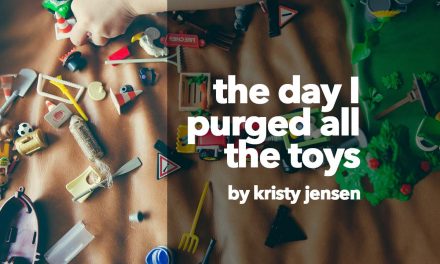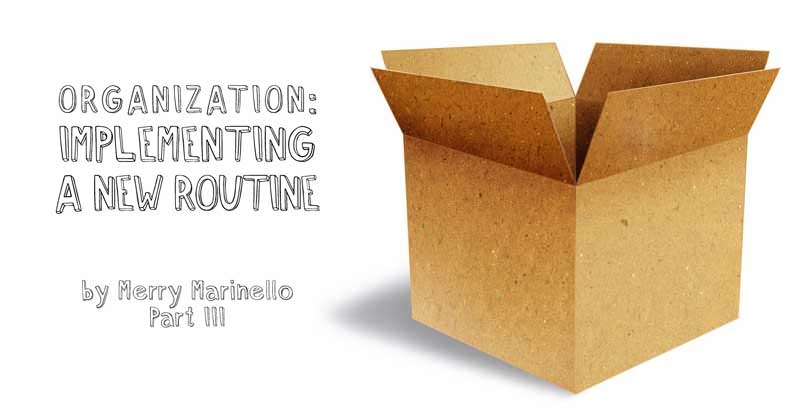Summer is really only fall-around-the-corner. For the homeschooling mom it can be a wonderful “calm” – that blessed season of organizing preparedness (otherwise known as homeschool planning) before the “storm” – the disintegration into the disorderly “flexibility” of the normal school year.
So much goes into this time period: thinking, praying, researching, and shopping. Everything points to the new school year and getting ready for it. If thoughts of fall bring to your mind (like it does to mine) the aroma of newly sharpened pencils, I would love to prepare a bouquet just for you. Since I can’t really deliver such a bouquet, I’ll have to settle for symbolic one – a sampling of some random thoughts compiled from many years of summer homeschool planning. Part 1 is a few of the “pencils” that I would add to your planning “bouquet.” Part 2 “pencils” are a more random encouragement “bouquet.”
Curriculum Choices
Whether you are winding down in your selection process or just getting started, the important thing to remember is that there are no perfect curriculum programs. Conversely, there are many, many wonderful programs. The goal is to get matched up with a wonderful program that is perfect for your family. This is why we use the F-A-M-I-L-Y acronym to remind us and you of the important factors. F is for faith or philosophy (Christian or secular material). A is for approach (classical, traditional, Charlotte Mason, etc.). M is for money (programs that fit into your budget). I is for individual (learning styles). L is for life (happenings in your family that influence choices). Y is for you (teacher support and preferences). Thinking through these factors and identifying characteristics of various programs will help you select (or eliminate) various programs. We (i.e. Rainbow’s consultants) have developed curriculum comparison charts in all the basic subjects to help you in identifying these program characteristics. Charts for Math, Phonics, and Handwriting are in the 2016-2017 catalog. Charts for Math, History, Science, Language Arts, Phonics, and Handwriting are available on our website – here.
Tips for Long-Range Planning
- Step back and look at the big picture – consider where you want to be in one year, or several years.
- Consider the scope and sequence of your child’s homeschool academic career – not just the courses for next year.
- Find publishers you like and then move through their scope and sequences.
Lesson Plans 101
Once you’ve made your curriculum selections, the next step is preparing your plans for covering the material. It’s easy to feel intimidated about “lesson plans” – it all sounds so formal and formidable. However, there’s more common sense involved in lesson planning than anything else so here is my “mini-course” on preparing lesson plans.
- Many curriculum products include lesson plans so don’t reinvent the wheel – just use what’s provided.
- Many others don’t need to provide them because it’s intuitive (i.e. just do one lesson per day).
- For the remainder, look for the obvious – a chapter a week; a module every two weeks; a unit a quarter.
- If you’re forced to come up with your own, then keep it simple. Determine the number of days or weeks that you plan to “school.” Divide your text page-wise so you know how many pages a day you need to cover to be finished in a year. Then use common sense in adjusting these pages to make a cohesive whole for any given day or week.
A Planner for Everyone
I’ve lost count of the different types of planners I’ve used over the years but one thing has remained constant – I use one. Organize your school day, your school year, or your entire life. There’s a planner for everybody and every situation. Although the titles can be deceptive, here are some general categories:
Lesson Plan Books
These tend to be “just the basics” and designed for teachers; having two-page weekly spreads for daily lesson plans and some classroom teacher info (seating charts, attendance records, etc.). We do have some “just the basics” homeschool-oriented lesson plan books as well which will include things like reading lists and field trips as extras.
Personal Planners
Extended calendars, often with two-page weekly or monthly calendars plus room for personal information. These typically are for general audiences and don’t include any homeschooling specifics but they do include grocery lists, to do lists, appointments, etc.
Homeschool Planners
These can vary from a homeschool version of a lesson plan book to an extensive homeschool and personal planner which might also incorporate some informative type of articles (i.e. handling sibling conflict). These will have monthly calendars plus weekly two-page lesson plan spreads in addition to chore lists, grocery lists, to do lists, prayer lists, and all sorts of other organizational helps.
Record Keeping
Totally bare bones; just a place to record grades – usually for an entire year and maybe for multiple students.
Gather up your “pencils,” thoroughly enjoy that wonderful “new start” aroma and have a blessed school year 2016-2017.

![Bouquets of Freshly Sharpened Pencils [Part 1]](https://ourhomeschoolforum.com/wp/wp-content/uploads/2016/08/bouquets-pencils-1-1200x640.jpg)



